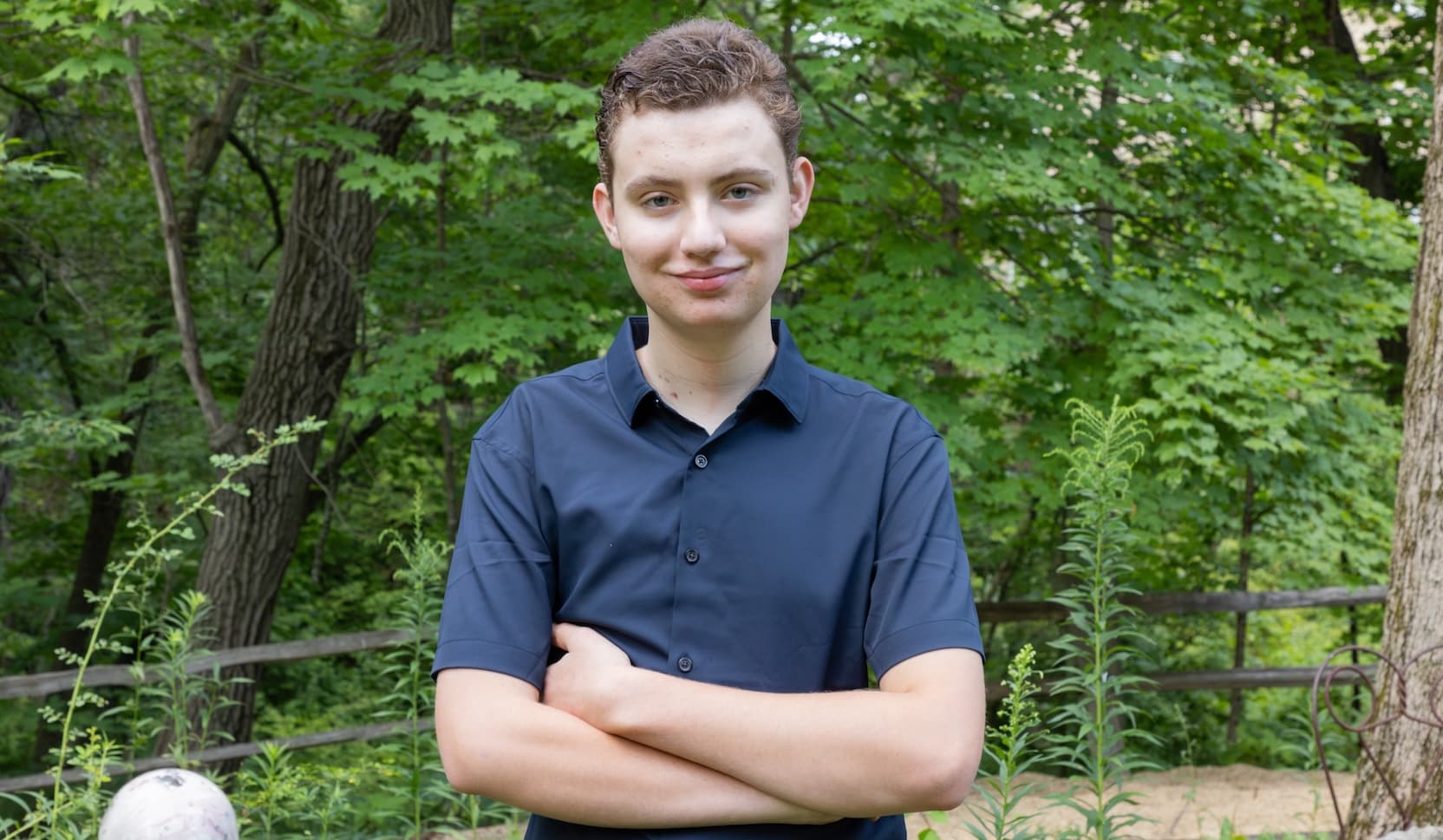Heart transplant without donor blood: How UChicago Medicine doctors saved a teen when no one else could

When doctors told 17-year-old Maddox McCullough that his heart was failing, his parents contacted some of the country’s top surgeons to see if they could perform a lifesaving heart transplant.
They all declined.
The transplant, his doctors said, would be highly complex due to Maddox’s congenital heart defect, which left him with just one ventricle instead of two. (Ventricles are responsible for pumping blood out of the heart).
Additionally, the surgery would need to be bloodless in accordance with their Jehovah’s Witness faith, meaning no donor blood or blood transfusions could be used.
A bloodless transplant for a single ventricle patient was unprecedented — and too risky, doctors told the McCulloughs.
Maddox’s case was then brought to the University of Chicago Medicine, where the heart transplant team is known worldwide for taking on the most difficult transplant cases, including bloodless procedures.
Challenges to bloodless heart transplant
Although no one had done a surgery like this before, Valluvan Jeevanandam, MD, director of UChicago Medicine’s Heart and Vascular Center, was confident he could do it.
The challenge, he said, would be to use only Maddox’s blood. Since his heart had just one ventricle, Jeevanandam would have to manage a lot of abnormal and backed-up blood — and do it through thick scar tissue from previous surgeries.
The McCulloughs put their trust in Jeevanandam. In a matter of a weeks, the family upended their lives, moving from Charleston, South Carolina, to Chicago for the surgery.
“If this was Maddox’s only chance for survival, we were going to do it,” said his mother, Amanda.
Maddox had the 15-hour, bloodless heart transplant surgery at UChicago Medicine on May 28, 2025. As Jeevanandam predicted, it was very complicated — but also a success.
“Now, we expect him to have not just years of life, but decades of life,” Jeevanandam said.
Search for a donor heart at 17
Born with an atrioventricular canal defect — which left a hole in his heart, displaced arteries and only one heart chamber rather than four — Maddox wasn’t expected to survive infancy. He had his first open-heart surgery when he was just two weeks old.
Two more soon followed, as surgeons repaired his heart and created new pathways to re-route blood to his heart and other organs.
“He was a very sick baby and a sick boy,” Amanda said.
A Fontan surgery, performed at age 4, redirected blood flow to Maddox’s pulmonary arteries and greatly improved his health.
Still, Maddox was regularly hospitalized during his childhood. He needed to use oxygen at home, and was often sleepy. His blood oxygen level, which should be between 95 to 100, sometimes dropped into the 70s.
By the time Maddox turned 17 in 2024, his heart had outgrown the surgical repairs. A heart transplant was the only solution.
UChicago Medicine doctors fast-tracked his surgery, knowing that it’d be easier to get a donor heart for Maddox when he was 17. If they waited until he turned 18, he’d be moved to the adult donor waiting list and could have a years-long wait.
Sure enough, Maddox got a donor heart two weeks after he was put on the waiting list in May, just weeks before his 18th birthday.

Navigating complex heart surgery
Jeevanandam faced many obstacles during Maddox’s transplant surgery. Removing the teen’s heart — a process that might normally take 35 minutes — took 4 1/2 hours because of its unusual configuration.
A normal heart involves five connections; Maddox’s required nine since all of his heart’s “plumbing” needed to be rerouted to accommodate the new heart, Jeevanandam said.
Maddox also had “one big mess of scar tissue” from three previous open-heart surgeries, making it difficult for Jeevanandam to navigate during the surgery.
That’s because scar tissue bleeds, and in people with one ventricle, blood doesn’t flow freely and backs up. It meant Maddox’s blood “would pour in from all over the place,” Jeevanandam said, and with the added high stakes of a bloodless surgery, he couldn’t afford to lose any of it.
“Every open-heart surgery doubles in complexity because of the thickness of the scar tissue,” Jeevanandam said. “Since this was Maddox’s fourth open heart surgery, it was 16 times the normal complexity.”
After the transplant, the surgical team kept a close watch on him for two hours to make sure there was no bleeding.
“If there was bleeding afterward, he wouldn’t have survived because he couldn’t take any blood products,” Jeevanandam said. “But he didn’t bleed at all.”
Active life after heart transplant
Today, Maddox takes anti-rejection medication and does cardiac rehab while UChicago Medicine’s transplant team monitors his new two-ventricle heart and other organs. He’s feeling healthier and stronger than ever and is grateful to Jeevanandam for treating his religious beliefs with respect.
“I’m still recovering a little bit, but I’ve been feeling real good and more awake,” said Maddox, now 18, who plans to enroll in trade school and become a plumber or electrician when his family returns to Charleston next year.
Before the surgery, Maddox's parents and younger sister made the most of each day with him, taking lots of camping and fishing trips, thinking they “wouldn’t have him forever,” Amanda said.
His mother still gets goosebumps thinking about how everything miraculously worked out for Maddox, and how Jeevanandam was willing to take a chance on him.
“When everyone else said ‘no,’ he said ‘yes.’ He is just amazing,” Amanda said. “For the first time, we have a future to think about. He doesn’t have heart disease anymore.”

Bloodless Heart Surgery
UChicago Medicine’s Bloodless Heart Surgery Program performs bloodless heart surgery (or transfusion-free heart surgery) on even the most complex bloodless heart surgeries without compromising our patients’ religious or personal reasons for needing “no blood” surgical or medical treatment. the most complex bloodless heart surgeries.
Learn more about bloodless heart surgery.